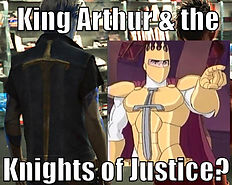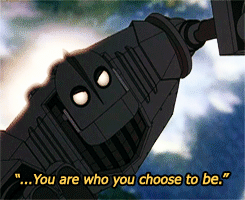Ready Player One
Described by one reviewer as an "unapologetic nostalgia cash grab," both the book and film versions of Ready Player One operate on a contradictory premise that the outside world matters more than the virtual, but the way to learn that is through an unhealthily obsessive fixation on past (specifically 80s U.S.) pop culture artifacts that only extend to surface level knowledge of those artifacts, not their deeper themes or lessons. With this underlying structure, it's unsurprising that a common complaint against both versions of this story condemn it for the hollow use of allusions and references.
A lot of this is because these allusions operate in the vein of Easter Eggs - aka, they are there so the audience can go, "hey! I know what that refers to. Neat!" And then they move on. There are two problems with this, though. The first is that, for those who don't know 80s U.S. pop culture, these allusions will go straight over our heads (I'm including myself here cause this is not my area of pop culture expertise. I do Disney). Therefore, the emotional impact of "hey! I know that!" is lost on the uninitiated. And that can be okay, except for the fact that this isn't a one-off occurrence in these stories, but literally the basis of the story itself.


Furthermore, allusions are a two-way street; if you're including them in your text, that inclusion should shed light both on your text and the one you're alluding to. If I were to say, "George Washington is the American Cincinnatus," I may not expect a common U.S. high schooler to know who one-time Roman dictator Cincinnatus was, but I do expect an American audience to understand who George Washington is, what he did, and be able to surmise that Cincinnatus did similar things based off of the connection I'm creating.
And that is one of the thematic and substantive problems of Ready Player One: for a story which centers so much of its time, plot, and themes essentially on understanding allusions and being able to navigate them, this tale doesn't get why that understanding matters. Allusions can be complex and nuanced when used correctly, but that means integrating them more thoroughly with what they're being connected to, not just giving the original work(s) a passing nod. After all, there's a difference between having an encyclopedic knowledge of a text and actually understanding and applying the themes, lessons, or ideals of that text.
For example, the book uses repeat allusions to the legends of King Arthur as a meta-commentary on how, for the atheist protagonist, the Gunter Quest is akin to a religious one, invoking and demanding the same level of devotion and determination. This works well as a critique on the ways people find purpose in their lives, as well as aggrandizing Percival's quest to a higher level than just "a video game challenge." So this allusion works on the level Ready Player One mostly operates at - the "I understood that reference" level - and on a larger cultural level, as it utilizes the themes of Arthurian quests and legends to nuance the plot in a way that is assumed to be understood by the predominately American audience who should get the allusions and see how they work. However, this is one example in a sea of allusions which aren't fully utilized, integrated, nor explored, and therefore feel empty.


Then again, you can do what the film does and spit in the face of what the original text means because you want a cool robot fight...


This is the other common complaint with this movie: the references aren't just hollow, but operate on bad faith as they completely ignore or contradict the messages of the original text because "it would look rad, dude." Anyone who loved The Iron Giant growing up, as I did, would reasonably be disconcerted by the Giant's willful use of violence - for the good guys, nonetheless - in this story, when his character arc in his film boils down to "this sentient gun doesn't want to kill. But I will save your lives, because I'm moral." As exciting as it is to see the Giant fight, the novelty wears off rather quickly and just leaves a bitter taste in the mouth. This isn't just an empty reference, but an upsetting one, that should have been cut from the script early on. For whoever wants to remake this story in the decades down the line, get this allusion right; it may also help the story overall by giving some actual moral themes and lessons to the plot, especially since both stories are about fighting, the choice to fight, corrupt organizations, and the power, ingenuity, optimism of youth to better the world.
But what do you think? Is there an allusion in either the book or film that worked as more than just an Easter Egg? Was there a reference made that you think could have been better integrated into the overall narrative? If you were going to write a similar narrative using the pop culture of your childhood and adolescence, which texts would you choose and how would you ensure that those allusions are more than just empty pandering? Please, answer any of these in the comments section below!
But hey, don't just take my word for this. Here are some of the several reviews which get into the lackluster, problematic, and/or obligatory use of allusions in both texts, in addition to the other problems with both versions of this story in general:
-
Captain Midnight's The Problem With Ready Player One
-
The always great Honest Trailer
-
On the misuse of the inclusion of the Iron Giant specifically and how it could have worked while keeping the themes of the original film, here's Nando v Movies' The Giant Mistake
-
The Unrealized Potential of Ready Player One from film and screenwriter critic and analyzer, Just Write